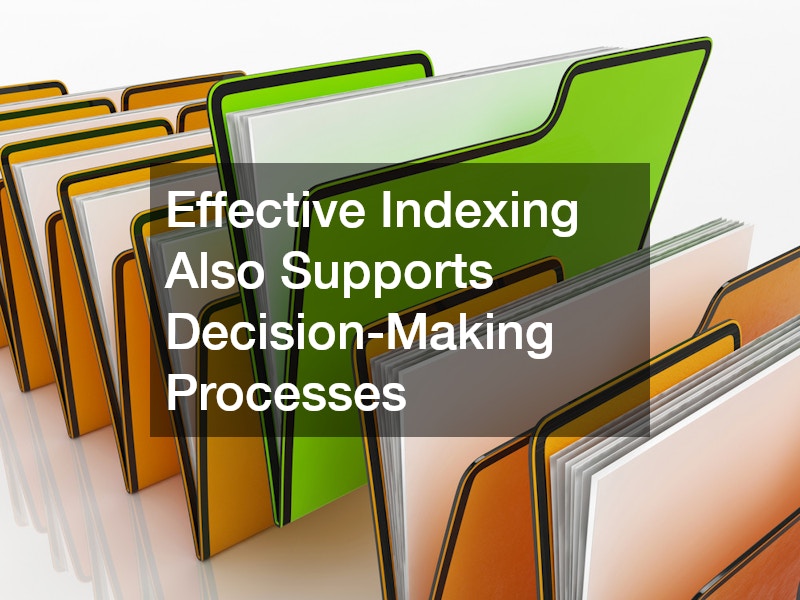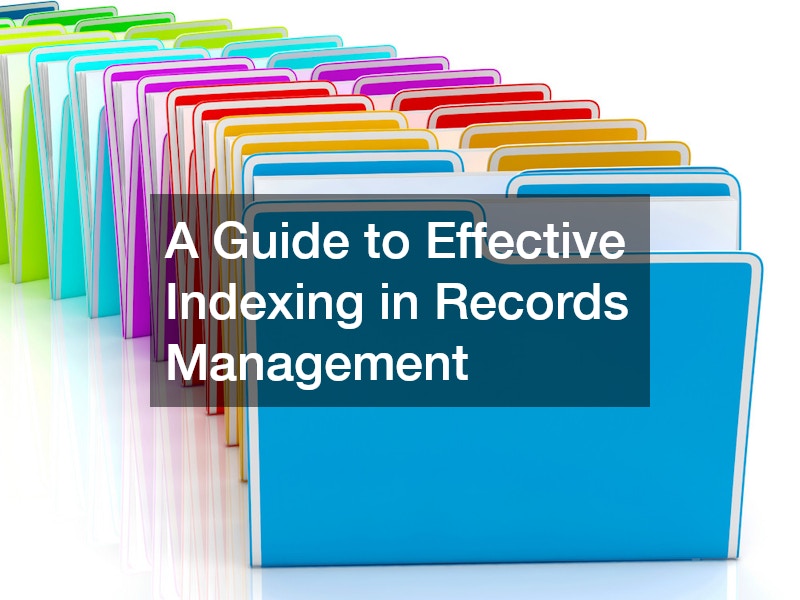In today’s fast-paced business environment, effective records management and indexing are crucial for organizational success. Indexing systems play a pivotal role in ensuring that records are easily accessible, thereby enhancing efficiency and compliance. This guide provides a comprehensive overview of effective indexing practices.
What is Indexing in Records Management?
Indexing in records management refers to the process of organizing and categorizing records to facilitate easy retrieval and access. It involves the systematic assignment of keywords, identifiers, or categories to records, making it easier for users to locate the information they need.
This process is vital in reducing the time spent searching for documents, thus enhancing overall productivity. Effective indexing is not merely about labeling files; it is about building a structure that reflects the organization’s information hierarchy and priorities. By doing so, organizations can significantly streamline their workflows and ensure that critical information is always at hand.
Moreover, indexing serves as a foundation for proper record management, which in turn supports compliance with legal and regulatory requirements. Many industries are subject to stringent regulations regarding information storage, access, and disposal. A well-structured indexing system helps ensure that record control documents are managed by these regulations, minimizing the risk of non-compliance. For example, in the healthcare sector, indexed records ensure that patient information is accurate, accessible, and securely managed as per HIPAA guidelines. Thus, organizations that prioritize efficient indexing enhance their legal preparedness and reduce the potential for costly legal infractions.
In addition to regulatory compliance, effective indexing also supports decision-making processes within an organization. With information easily accessible, decision-makers can base their decisions on the most accurate and current data available. This ability to quickly access relevant records is crucial in scenarios where time-sensitive decisions are necessary. As businesses continue to expand their operations and data volume grows, the need for a robust indexing system becomes increasingly critical. Therefore, indexing is not simply a technical task but a strategic component that empowers organizational agility and responsiveness.
How Do You Design an Effective Indexing System?
Designing an effective indexing system begins with understanding the organization’s specific needs and goals. This involves a comprehensive assessment of the types of records managed, their volume, and how often they need to be accessed. The design should be tailored to the unique processes and structures of the organization to ensure that it integrates seamlessly with existing workflows. A custom-designed indexing system not only improves efficiency but also maximizes the utility of the records management system. Therefore, engaging stakeholders across various departments during the design phase can lead to a more inclusive and effective indexing system that serves the organization well.
Integration of technology is another critical element in designing an effective indexing system. Modern indexing systems leverage technological advancements such as artificial intelligence (AI) and machine learning to automate and enhance accuracy in the indexing process. AI-driven indexing can handle vast amounts of data with precision, identifying patterns and making connections that might not be immediately apparent to human indexers. This technology allows for dynamic updating and scaling of the indexing system as organizational needs evolve over time. Additionally, automated indexing systems reduce the possibility of human error, ensuring that records are consistently and accurately organized.
What are the Best Practices for Indexing?
Adopting best practices for indexing is essential for maintaining a high standard of records management. One recommended practice is to develop a standardized indexing protocol that is adhered to across the organization. This involves establishing clear guidelines on how records should be categorized, tagged, and stored. Consistency in indexing ensures that records are uniform and easier to retrieve, irrespective of who manages them. Moreover, standardization reduces confusion and errors, providing a cohesive structure that supports consistent and efficient records management.
Regular audits and reviews of indexing practices are also recommended to ensure the system remains efficient and compliant. By periodically reviewing the indexing system, organizations can identify areas of improvement and make necessary adjustments. This proactive approach helps in maintaining a system that adapts to changing organizational needs and external requirements. Incorporating feedback from users can also provide valuable insights into how the indexing system is functioning. Regular updates and refinements ensure that the system remains relevant and effective, addressing any gaps or challenges that arise over time.

Effective indexing is integral to efficient records management, providing significant benefits such as improved access, compliance, and operational efficiency. By understanding and implementing best practices, addressing common challenges, and embracing technological advancements, organizations can optimize their indexing processes for future success. The commitment to a robust indexing system reflects an organization’s dedication to operational excellence and its readiness to navigate an increasingly complex data landscape. As businesses strive to remain competitive, effective indexing will continue to be a cornerstone of strategic information management, enabling agility and informed decision-making. In conclusion, investment in effective indexing translates to enhanced organizational performance and a sustainable competitive advantage.

